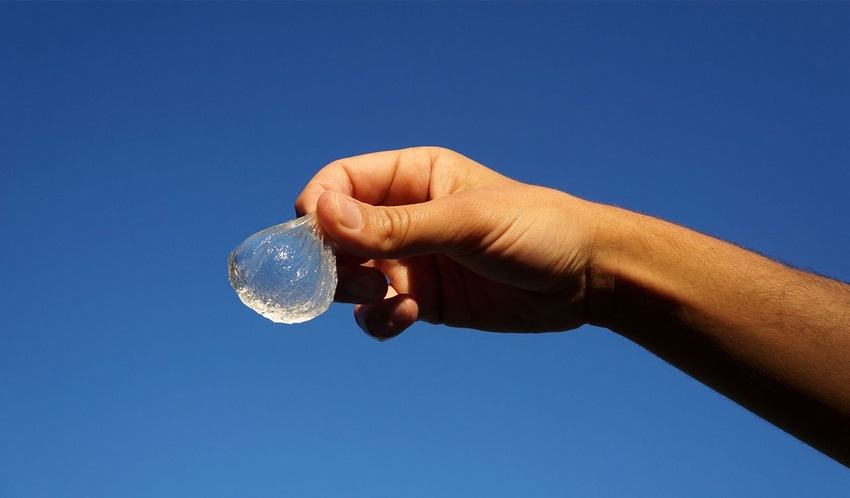Sustainable, seaweed-based water bottles … you can eat?
While plastic containers likely won’t be phased out anytime soon, there have been a few packaging trends that aim to help solve the plastic pollution problem—just try eating it. Yes, that’s right. Skipping Rocks Lab, a London-based start-up consisting of three industrial design students, has created a new kind of packaging made from seaweed that proposes an alternative to plastic bottles … and it’s edible.
November 11, 2015

 Ooho!, inspired by techniques from molecular gastronomy, is a blob-like water container (similar to a water balloon) that is easy and inexpensive to make (costs only 2 cents), durable, hygienic, biodegradable, edible … not to mention, it provides zero waste. When you’re ready to drink away, all you need to do is pierce the seaweed- and calcium chloride-based membrane.
Ooho!, inspired by techniques from molecular gastronomy, is a blob-like water container (similar to a water balloon) that is easy and inexpensive to make (costs only 2 cents), durable, hygienic, biodegradable, edible … not to mention, it provides zero waste. When you’re ready to drink away, all you need to do is pierce the seaweed- and calcium chloride-based membrane.
“Curiosity leads us to appreciate the most simple and beauty form that nature offers us, a drop. It is the smallest quantity of liquid heavy enough to fall in a spherical mass. Liquid forms drops because the liquid exhibits surface tension, bounded completely or almost completely by free surfaces,” writes the product designers.
"Ooho!" replicates this behavior by encircling the water in an eatable membrane of algae. It is new way of packaging that proposes an alternative to the plastic bottle. Using the culinary technique of sphereification, the water is encapsulated in a double gelatinous membrane. The double membrane protects the inside hygienically, and makes it possible to put labels between the two layers without any adhesive," the  designers explain.
designers explain.
While the package is being formed, the water is frozen as ice during the encapsulation so it is possible to get bigger spheres and allows to the calcium and algae to stay exclusively in the membrane.
Even if bottled water companies don't jump onboard with this new alternative to packaging, the designers say they hope people will try making the packages at home. "Anyone can make them in their kitchen, modifying and innovating the recipe. It's not DIY but CIY—cook it yourself."
The design was a winner of the second annual Lexus Design Award last year and just received a sizable sustainability grant from the European Union to hopefully introduce its novel concept on a large scale.
About the Author(s)
You May Also Like


